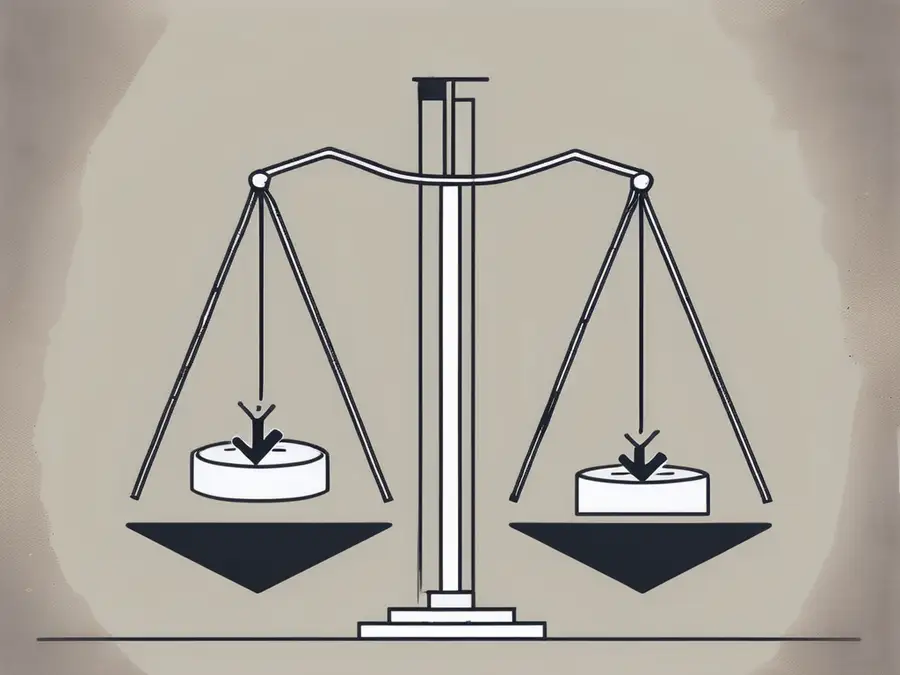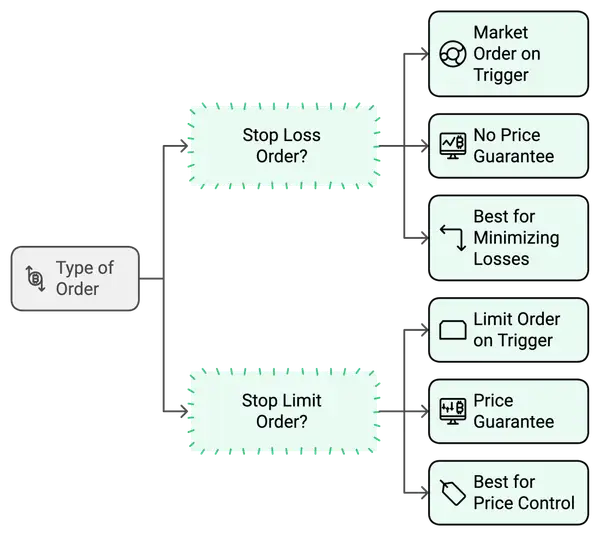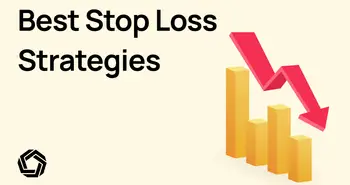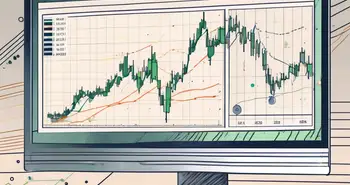Stop Loss vs Stop Limit: Key Differences Explained

In the world of trading, keeping your investments safe and making the most profit is very important. Two of the most common tools traders use to do this are stop loss and stop limit orders. These orders help protect your money and ensure your trades happen at the right prices. But knowing the differences between stop loss and stop limit orders can really improve your trading. In this article, we'll explain what these orders are, how they work, and when to use them, so you can trade smarter and with more confidence.
Understanding the Basics of Trading Orders
Before diving into the specifics of stop loss and stop limit orders, it's important to have a good grasp of trading orders in general. Trading orders are instructions given by investors to their brokers to execute specific trades on their behalf. These orders can include buying or selling assets at a particular price or under certain conditions. By using trading orders effectively, investors can automate their trades and manage their risk more efficiently.
What is a Stop Loss Order?
A stop loss order helps limit potential losses on an investment by instructing the broker to sell an asset if its price drops to a specified level. This automated safety net helps protect your investments from significant losses if the market moves against your expectations.
Example: Imagine you bought shares of a company at $50 each. You want to protect yourself from losing too much money if the stock price falls. So, you set a stop loss order at $45. If the stock price drops to $45, your broker will automatically sell your shares at the best available price, preventing further losses.
What is a Stop Limit Order?
A stop limit order combines the features of a stop loss order and a limit order. It specifies a stop price and a limit price. When the asset reaches the stop price, a limit order is triggered, but the trade is only executed at the limit price or better. This offers greater control over the execution price but comes with the risk that the order may not be executed if the market moves too quickly.
Example: Suppose you own shares of a company that are currently trading at $50 each. You believe the stock has potential to rise but want to sell if it hits a certain lower limit. You set a stop price at $48 and a limit price at $47. If the stock price drops to $48, your stop limit order triggers a limit order to sell your shares, but only if the price is $47 or better. If the price falls too quickly past $47, the order might not execute.
The Mechanism of Stop Loss and Stop Limit Orders
Now that we've covered the basics, let's delve deeper into how stop loss and stop limit orders actually work.
How Does a Stop Loss Order Work?
When a stop loss order is triggered, it becomes a market order. This means that your broker will attempt to sell the asset at the best possible price, which could be slightly different from the stop price you set. However, in volatile markets, there is a possibility of slippage, where the actual sale price may deviate significantly from the stop price. It's important to keep this in mind when setting your stop loss levels.
How Does a Stop Limit Order Work?
A stop limit order adds an additional component to a stop loss order: the limit price. Once the stop price is reached, a limit order is activated. This means that your broker will attempt to buy or sell the asset at the limit price or better. Unlike a stop loss order, a stop limit order does not guarantee execution. If the market moves rapidly and skips past your limit price, the trade may not be executed at all. This can happen in highly volatile markets or during market gaps.
Key Differences Between Stop Loss and Stop Limit Orders
While both stop loss and stop limit orders are designed to manage risk, there are several key differences between them that traders should be aware of.

Price Certainty vs Execution Certainty
One of the primary differences between the two order types is the level of certainty they offer. A stop loss order provides price certainty, as it guarantees execution once the specified stop price is reached. On the other hand, a stop limit order provides execution certainty, as it guarantees execution at or better than the specified limit price but does not guarantee execution at all. Depending on your trading strategy and risk tolerance, you will need to choose between price certainty and execution certainty.
Risk and Reward Considerations
Another important factor to consider is the risk and reward trade-off between stop loss and stop limit orders. With a stop loss order, you have a higher chance of having your trade executed, but there is a possibility of slippage, which could lead to a larger loss. However, with a stop limit order, there is a risk of not having your trade executed if the market moves rapidly. This means you may miss out on potential profits if the market quickly reverses in your favor.
Choosing the Right Order for Your Trading Strategy
Knowing when to use a stop loss order versus a stop limit order can greatly enhance your trading strategy.
When to Use Stop Loss Orders
Stop loss orders are particularly useful when you want to limit your potential losses on an investment. By setting a stop loss order, you can automatically sell an asset if its price falls below a predetermined level that you are comfortable with. This can protect your portfolio from significant losses and help you stick to your risk management plan.
When to Use Stop Limit Orders
Stop limit orders are ideal when you have a specific target price at which you want to buy or sell an asset. By setting both a stop price and a limit price, you can ensure that your trade is executed at or better than your desired price. Stop limit orders are especially beneficial in market conditions where quick price movements are expected, as they offer more control over the execution price.
Common Misconceptions About Stop Loss and Stop Limit Orders
As an expert in trading, I've come across a few common misconceptions about stop loss and stop limit orders that are worth addressing.
Debunking Myths About Stop Loss Orders
One of the most common myths about stop loss orders is that they are guaranteed to protect you from all losses. While stop loss orders can help minimize your losses, they are not foolproof. In fast-moving markets or during periods of market gaps, your stop loss order may not be executed at your desired price, resulting in a larger loss than anticipated. It's important to set your stop loss levels carefully and regularly monitor your positions to ensure they are still aligned with your risk tolerance.
Clearing Up Confusion Around Stop Limit Orders
Another misconception about stop limit orders is that they are always more beneficial than stop loss orders. While stop limit orders offer the advantage of price control, they can also come with the risk of not being executed if the market moves rapidly. If the price skips past your limit price, your trade may not be executed at all, potentially causing you to miss out on profits. As with any trading strategy, it's important to weigh the pros and cons before deciding which order type is most suitable for your specific trading goals.
FAQs
What is the main difference between a stop loss order and a stop limit order?
The main difference between a stop loss order and a stop limit order lies in the level of certainty they offer. A stop loss order guarantees execution once the specified stop price is reached, while a stop limit order provides execution certainty at or better than the specified limit price but does not guarantee execution at all.
When should I use a stop loss order?
A stop loss order is particularly useful when you want to limit potential losses on an investment. It allows you to automatically sell an asset if its price falls below a predetermined level, providing protection against significant losses.
When should I use a stop limit order?
A stop limit order should be used when you have a specific target price at which you want to buy or sell an asset. By setting both a stop price and a limit price, you can ensure that your trade is executed at or better than your desired price.
Are stop loss orders guaranteed to protect me from all losses?
No, stop loss orders are not guaranteed to protect you from all losses. In highly volatile markets or during market gaps, your stop loss order may not be executed at your desired price, resulting in a larger loss than anticipated.
Are stop limit orders always more beneficial than stop loss orders?
No, stop limit orders are not always more beneficial than stop loss orders. While stop limit orders provide price control, there is a risk of not being executed if the market moves rapidly. It's essential to assess the advantages and disadvantages of each order type and choose the one that aligns best with your trading goals and risk tolerance.
By understanding the differences between stop loss and stop limit orders, you can make more informed decisions in your trading strategy. Keep in mind that no trading order is foolproof, and it's crucial to regularly assess and adjust your positions based on market conditions and your risk tolerance. Remember, successful trading requires a combination of knowledge, experience, and adaptability. Happy trading!
Ready to take control of your trading strategy with the innovative tools and unique advantages offered by Morpher? Embrace the future of investing on a platform that eliminates trading fees, offers infinite liquidity, and allows for fractional investing and short selling across a multitude of markets. Ensure your safety with the non-custodial Morpher Wallet, and consider leveraging your trades up to 10x for greater potential returns. Experience the transformation of trading with Morpher's blockchain-based platform. Sign Up and Get Your Free Sign Up Bonus today, and join the community of traders who are already navigating the markets with precision and adaptability.

Disclaimer: All investments involve risk, and the past performance of a security, industry, sector, market, financial product, trading strategy, or individual’s trading does not guarantee future results or returns. Investors are fully responsible for any investment decisions they make. Such decisions should be based solely on an evaluation of their financial circumstances, investment objectives, risk tolerance, and liquidity needs. This post does not constitute investment advice.

Painless trading for everyone
Hundreds of markets all in one place - Apple, Bitcoin, Gold, Watches, NFTs, Sneakers and so much more.

Painless trading for everyone
Hundreds of markets all in one place - Apple, Bitcoin, Gold, Watches, NFTs, Sneakers and so much more.







